The term “hidden gem” is thrown around quite often, but in my humble opinion, it 100% applies to Zamora. This city is in Spain’s Castille and León autonomous community, perfectly balancing history, beautiful landscapes, and a laidback vibe.
Although it is a small city, there are still plenty of things to see in Zamora, which makes it an ideal destination for a weekend getaway. Do you enjoy wandering through charming Medieval towns? Would you consider yourself a foodie? Are you a fan of Romanesque architecture? Is bird watching one of your hobbies? If you answer “yes” to any or all of these questions, you will feel at home and welcome in this city.
In this post, I will cover the must-see attractions and top things to do in Zamora in two days. This list will also include surprising activities when you visit Zamora, a beautiful, underrated destination that you can quickly get to from Madrid or Valladolid.
Top Things to Do and See in Zamora in 2 Days
1. Discovering the Zamora Castle
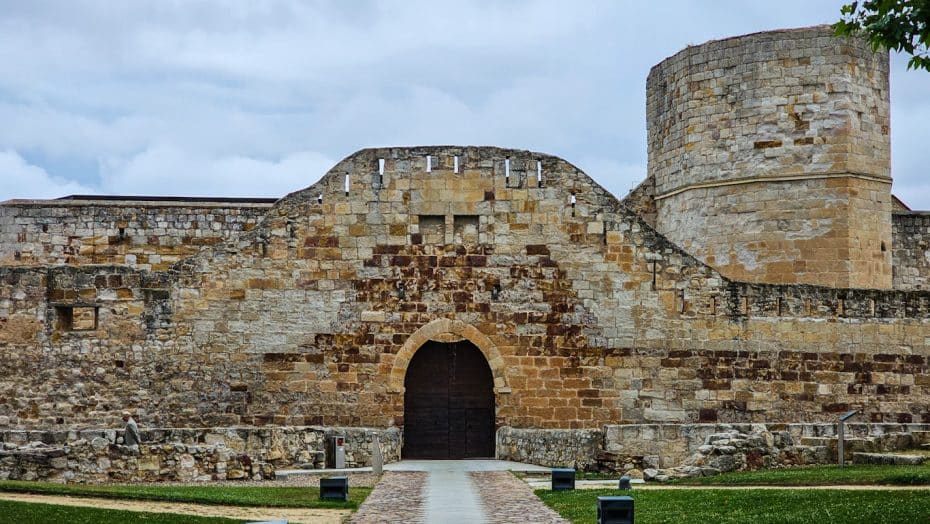
The Zamora Castle is a medieval fortress vital to the city’s past. Located on the hill of Olivares, the castle has strategic views over the Duero River and the surrounding area. So, it was essential to defend the city through several past conflicts. And, still today, you can catch spectacular views of the sunset from this prime spot.
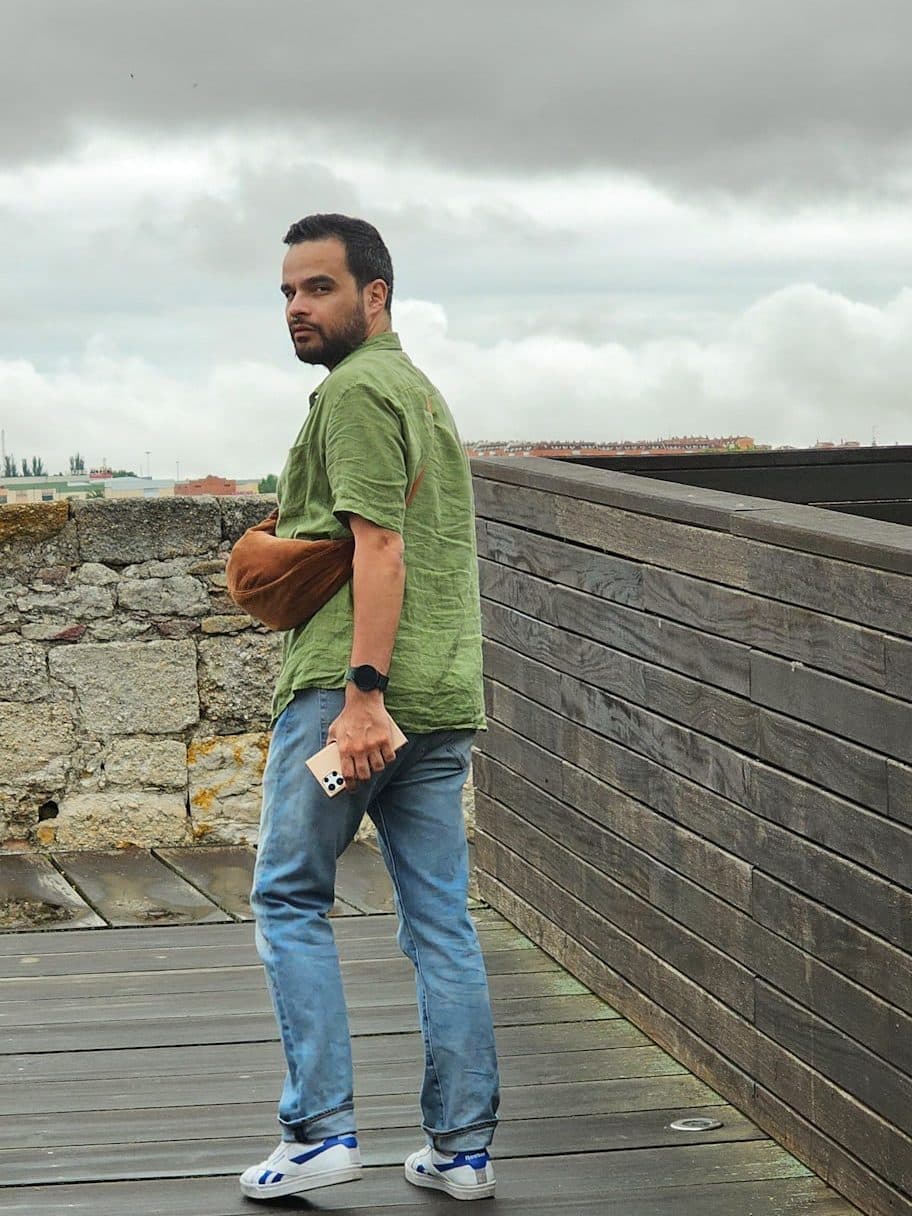
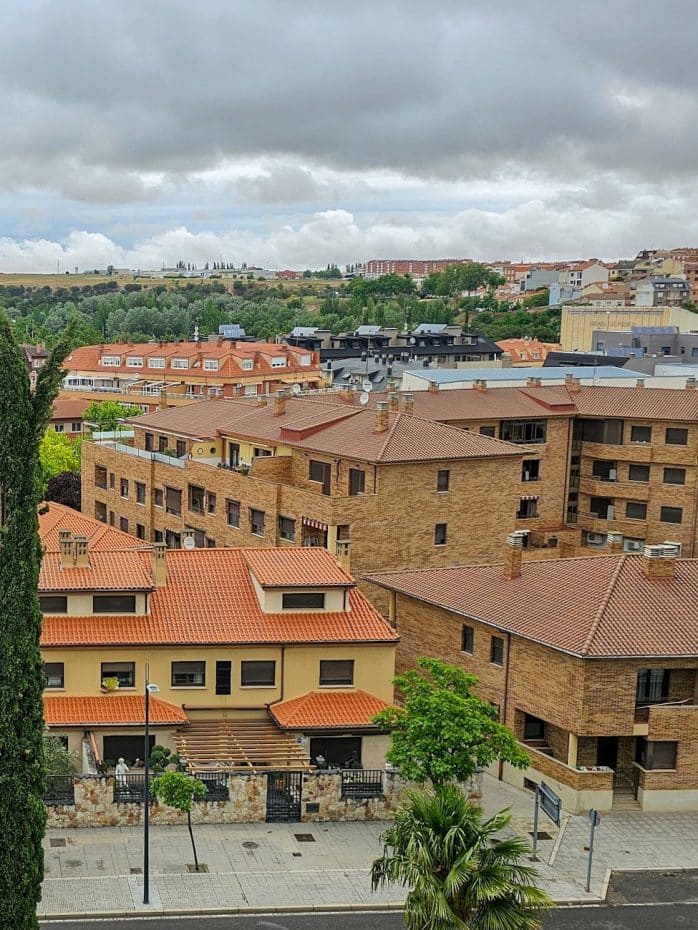
The Zamora Castle’s structure features Romanesque and Gothic elements. Among the things worth exploring inside this fortress is the keep, which was a lookout tower and defensive point. Other points of interest include its courtyard.
The castle, which you can visit for free, is open Tuesday through Sunday from 10 AM to 2 PM and from 5 PM to 8 PM during summer; winter hours are from 10 AM to 2 PM and from 4 PM to 6:30 PM. Its surrounding garden, featuring sculptures by the artist Baltasar Lobo, born in Zamora, is also a must-see.
2. Entering the Zamora Cathedral
The Zamora Cathedral is a Romanesque temple located on the hill of the old town, near the banks of the Duero River. You’ll only have to walk to the southeast for around three minutes to get to the cathedral from the castle. Construction started in 1140 and ended in 1174, although this story has several versions. One of the most remarkable aspects of this church is its dome, often called “cimborrio.” The dome features sixteen small windows that allow natural light to filter into the space. The drum supporting the dome has blind arches and columns as decor.
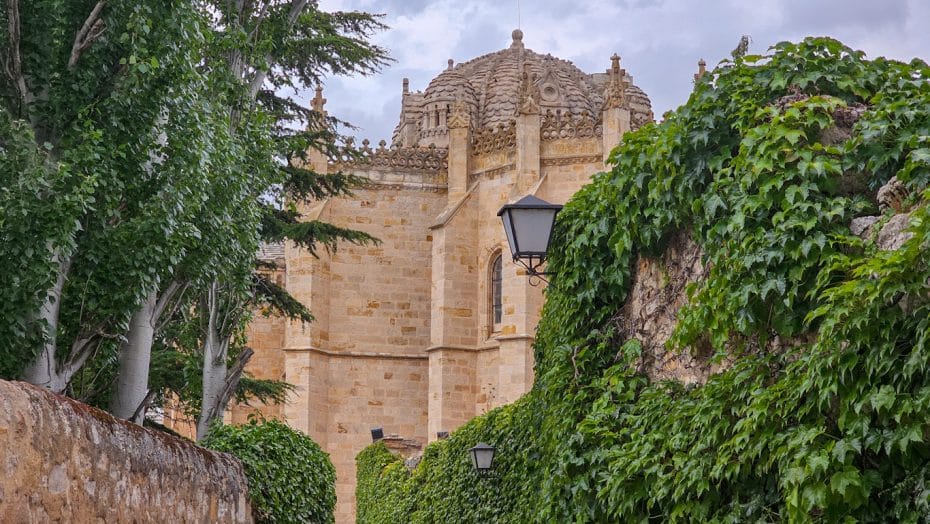
The main entry to the cathedral features intricate carvings of biblical scenes, saints, and other religious iconography. Inside, you will find an impressive collection of art and relics. For example, the choir stalls are exquisitely carved.
The cathedral is open to the public from Monday to Saturday between 10:00 AM and 8:00 PM, with shorter hours on Sundays and public holidays. Tickets for adults cost 6€ and include a visit to the cathedral’s museum and the Santo Tomé church.
3. Visiting the Old Town Walls
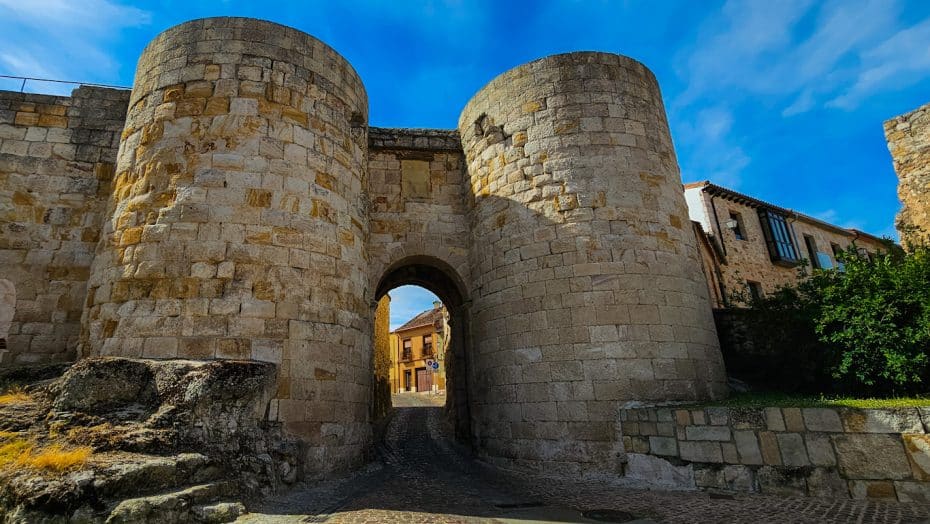
Zamora’s Old Town walls date back to the early Middle Ages, in the 11th and 12th centuries. Initially built during the reign of King Alfonso III, Queen Urraca would later order its expansion. These walls are in the northern part of Zamora’s old town.
These walls defended the city against invasions in typical Middle Ages fashion. They are an example of medieval military architecture. The walls have several sections, including watchtowers and gates, that glimpse the defensive strategies used during that period.
Amongst the gates, you can see the Puerta del Obispo (Bishop’s Gate), which was one of the primary entrances to the city.
4. Walking Along the Duero River
The Duero is a river that passes through Zamora and is essential to the city, both historically and geographically. This river, which marks a border between Spain and Portugal, also provides Zamora with beautiful landscapes, perfect for scenic walks and bike rides.
The Duero River runs along the northern part of Zamora’s historic center. One of the most notable bridges crossing the Duero is the Stone Bridge (Puente de Piedra). This medieval bridge dates back to the 12th century. It spans approximately 820 feet (250 meters) and has sixteen arches, making it an architectural marvel of its time. This bridge is the most recognizable landmark in Zamora, and I can assure you it is so gorgeous that you’ll find yourself taking many pictures of it.
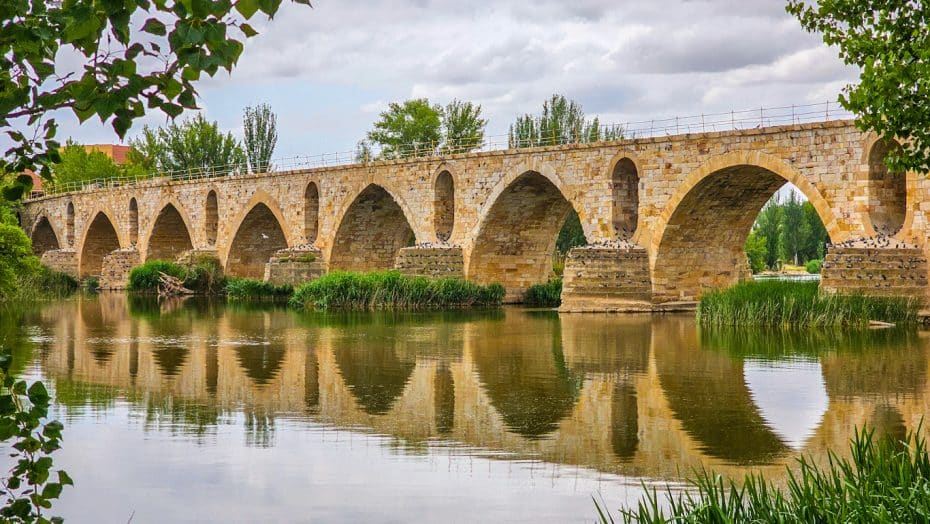
Another significant bridge is the Iron Bridge (Puente de Hierro), built in the late 19th century. This bridge opened in 1905 and was initially used for rail traffic but is now open for pedestrians and cars. Its structure reflects the industrial developments of that era and offers an excellent contrast to the older Stone Bridge.
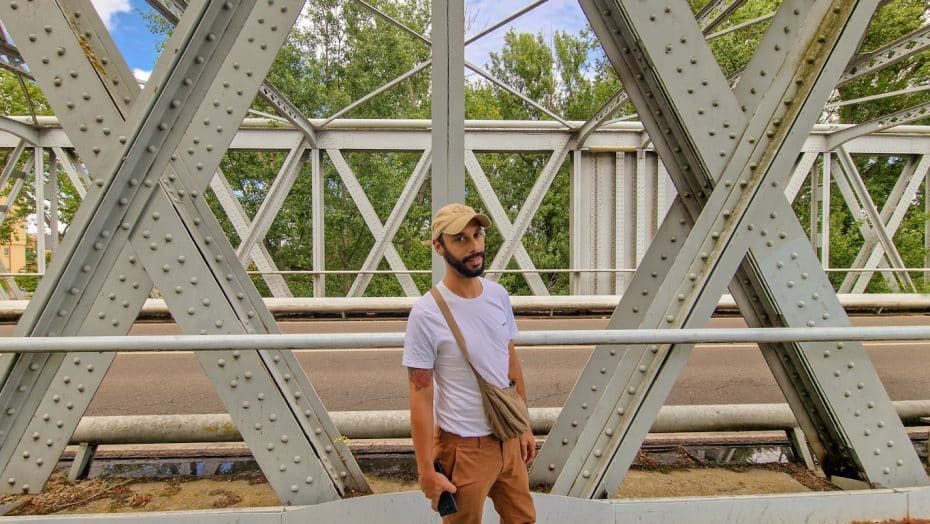
Zamora is also home to several archaeological finds along the banks of the Duero River. For example, the Aceñas, a Medieval water mill, used the strength and power of the river to grind grains and spin wool. There are two groups of these mills in the city. The most popular are the Aceñas de Olivares, near the Cathedral, and you can visit for free.
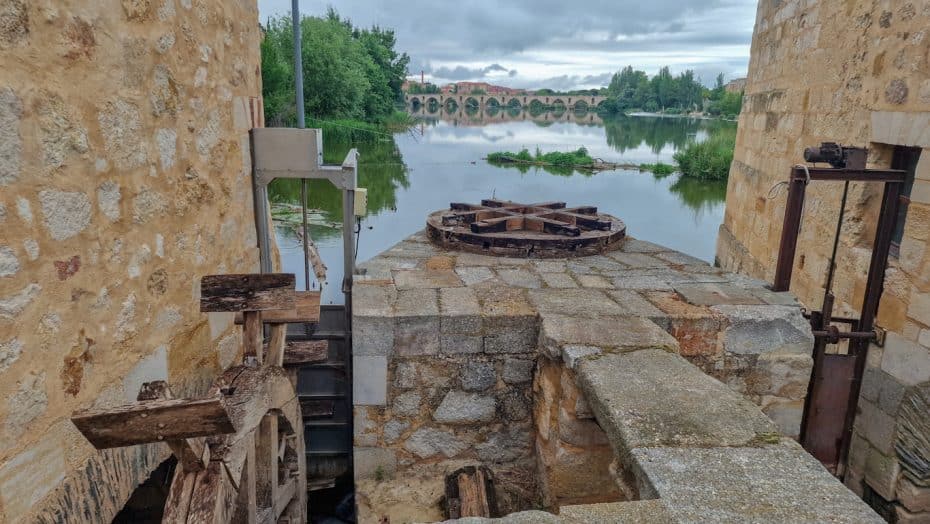
On the other hand, the Aceñas de Pinilla is near the Iron Bridge, and you can also visit them for free, but you won’t be able to see the mills inside.
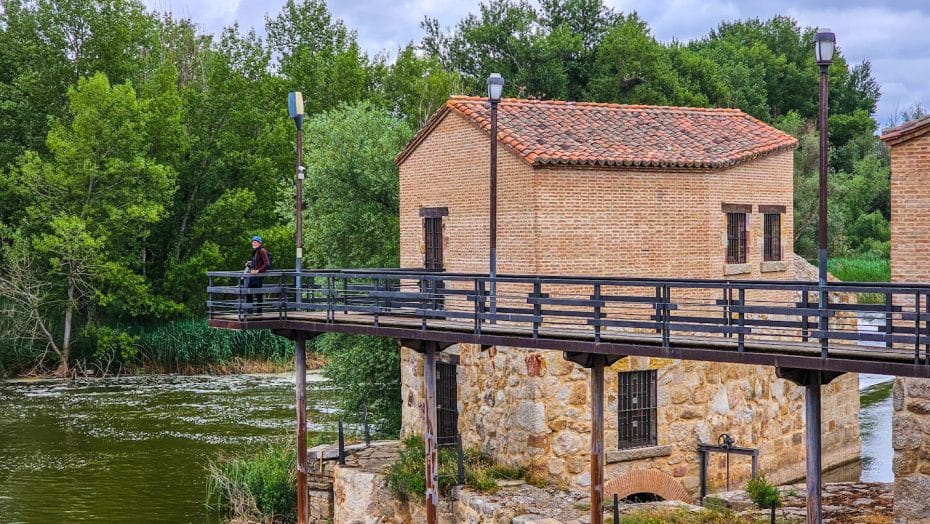
To explore these sites, you can start at Plaza Mayor and walk north towards Avila Street, which leads to both bridges. You can also use buses to move through Zamora’s different areas, but the city is small enough to walk around. And, trust me, with such stunning views, you’ll want to walk.
5. Wandering Around the City Center
No visit to Zamora would be complete without wandering around the alleys of its Old Town. In this part of the city, one of the best areas to stay in Zamora, you will find the best hotels, restaurants, and bars. Likewise, you can do retail therapy in the historic center’s shopping centers, department stores, boutiques, and souvenir shops.
If you want to update your Instagram feed, Zamora’s Center has many photo-ready backdrops.
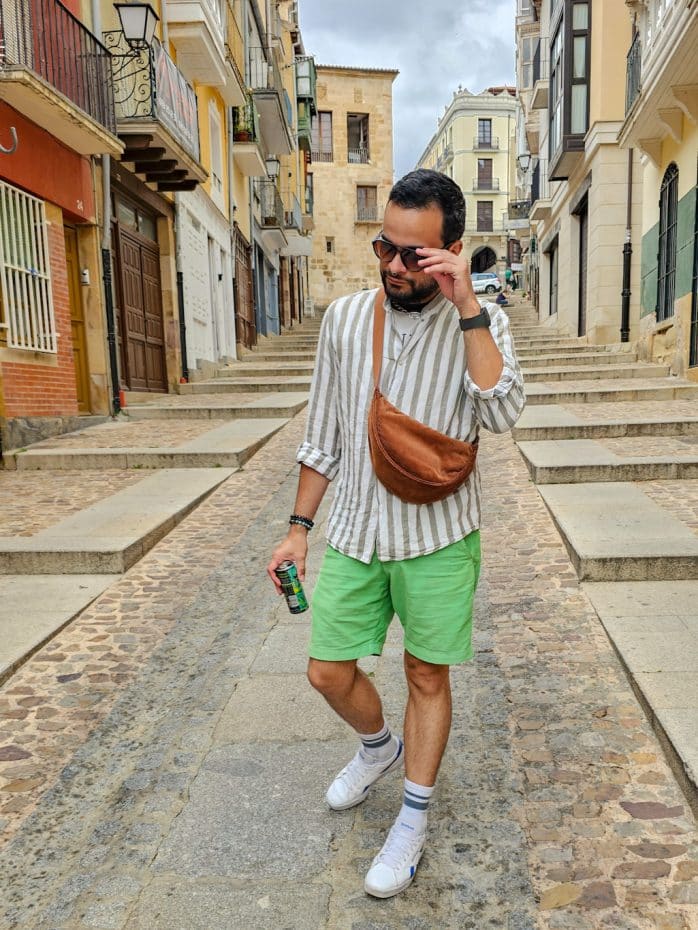
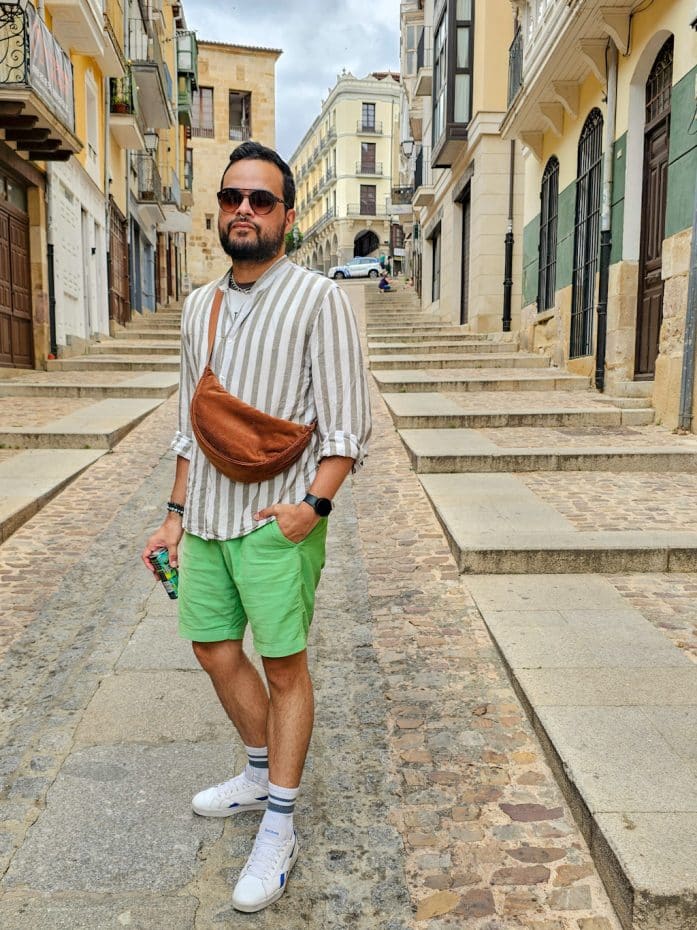
6. Bird Watching: An Excellent Thing to Do in Zamora
During my recent visit to Zamora, I was surprised by how many bird species you could see nesting or flying around the city. In particular, I’ve lost count of how many white storks with babies (theirs, not humans) I saw on their nests on top of churches and even the city’s Plaza Mayor. So, if you’re a bird-watching enthusiast, you’ll love visiting Zamora.
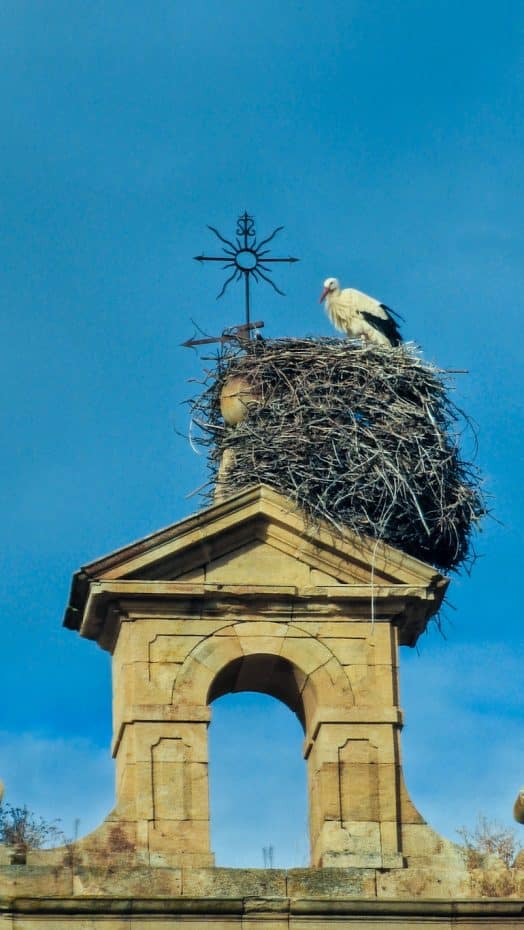
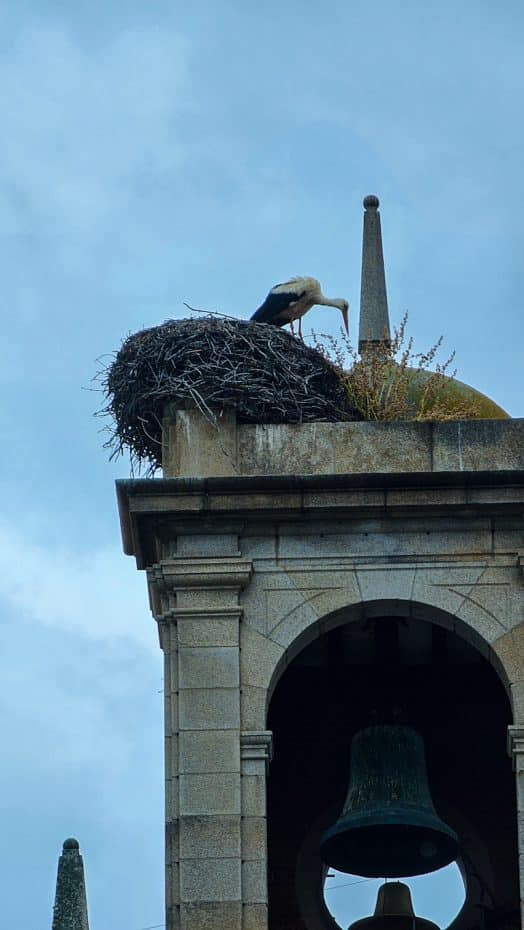
The Duero River is a prime bird-watching site within the city. Around the river, you may spot other species like the Eurasian penduline tit and the night heron. However, please remember that you’ll be able to see a wider variety of birds during certain times of the year. Notably, spring and autumn serve as critical migratory periods when a greater diversity of birds might be seen passing through or temporarily living in Zamora. I was there for the spring and can assure you it’s a beautiful time to visit the city and go bird-watching.
7. Attending the Semana Santa (Holy Week) in Zamora
Semana Santa in Zamora is a major cultural event with deep historical roots. This Holy Week celebration dates back to the 13th century and welcomes crowded religious processions. This traditional event usually takes place between mid-March and the beginning of April. So, if you plan to visit Zamora around this time, you can’t miss the opportunity to witness this unique celebration.
Easter is the most important social and religious event in the city, which reaches several very intense moments throughout the ten days in which the city is immersed in its processions.
The city’s Old Town, particularly around the Plaza Mayor, serves as the primary location for the processions. These streets are filled with brotherhoods known as “cofradías” that organize and participate in the events. Each cofradía has its distinctive attire and floats, called “pasos,” representing scenes from the Passion of Christ. The sculptures on these floats are often centuries old. Most activities take place between Palm Sunday and Easter Sunday.
Even if you wouldn’t call yourself a religious person, watching the Semana Santa processions will give you a real sense of Zamora’s history.
8. Tasting Zamora’s Local Cuisine and Wine
Of course, traditional food is among the best parts of a trip, and Zamora doesn’t disappoint in that area. The city offers an essential look into Castilian cuisine and wine. The traditional dish, “bacalao a la tranca, ” features salted cod prepared with paprika and garlic. This delicious dish is traditionally served with roasted red peppers. Another significant local recipe is “arroz a la Zamorana,” a rice dish that includes pork, sausage, and sometimes blood sausage or “morcilla.”
Likewise, the city is also famous for its cheese. Zamora’s cheeses include the raw sheep’s milk cheese called “Queso Zamorano.” This cheese has had a protected denomination of origin status since 1993. You can have Queso Zamorano at many restaurants and bars in Zamora; the challenge will be only to have a few pieces/slices.

In terms of wine, the region stands out for its Toro Denomination of Origin wines. These wines typically use Tinta de Toro grapes similar to Tempranillo but adapted to the area, resulting in rich red wines. These wines are perfect to pair with the already mentioned Queso Zamorano, and several bodegas in the city offer group tastings.
For dining, Restaurante Los Caprichos de Meneses, located near Plaza Mayor, has high reviews on TripAdvisor because of its “bacalao a la tranca”. On Calle de los Herreros, Casa Mariano has also been praised for its tasty food, including hearty stews and local cheeses.
9. Going on an Art Nouveau Architecture Tour in Zamora
Zamora features notable examples of Art Nouveau architecture. This architectural movement, which emerged in the late 19th and early 20th centuries, is inspired by nature, showcasing shapes and elements that resemble plants and flowers.
One of Zamora’s most significant Art Nouveau buildings is the Mercado de Abastos. Built in the early 20th century, this market exemplifies Art Nouveau principles with iron and glass, creating an open and functional space. Another example is the Ramos Carrión Theatre, designed by Francisco Ferriol in 1916.
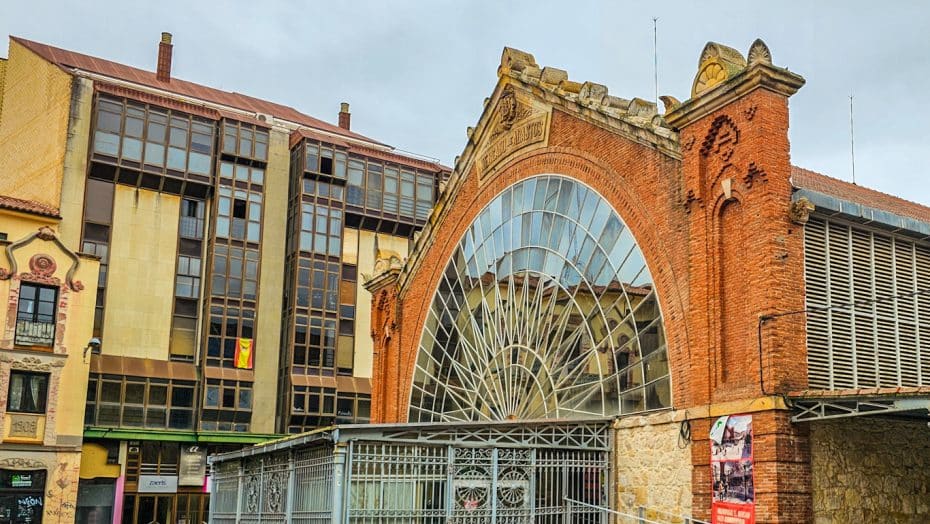
These structures contribute to Zamora’s architectural landscape by highlighting a shift towards contemporary design. They also create a striking juxtaposition between the old and the new, tradition and modernity, Romanesque and Art Nouveau architecture.
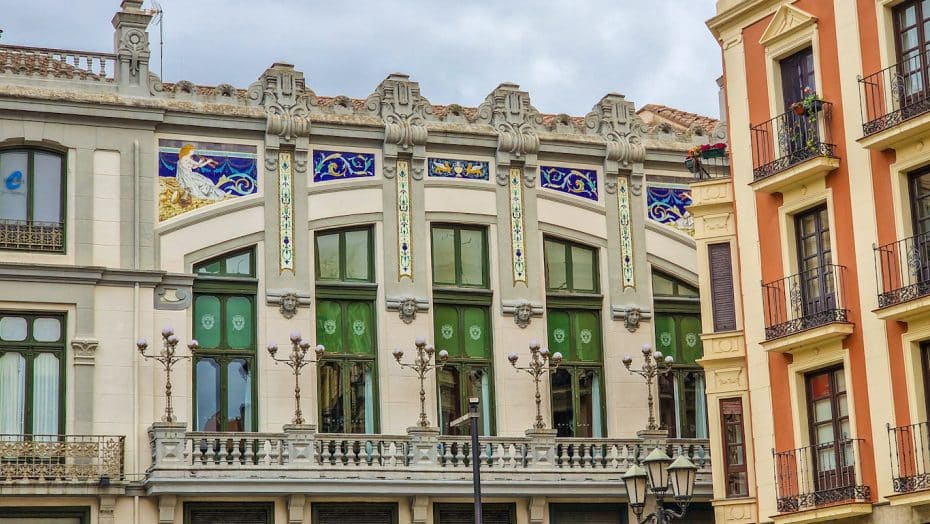
You can hire several tours around the city’s most important Art Nouver monuments. However, you can also easily explore these buildings on your own. After all, you can find most of the buildings around Sagasta Square, except for the market, which is a 4-minute walk northeast of the square.
10. Looking at the Street Art in Zamora
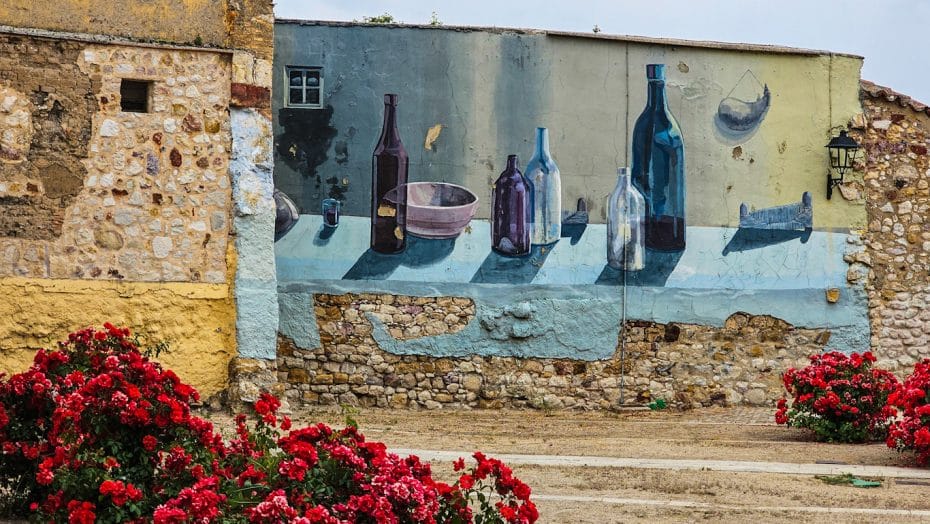
The street art in Zamora was a genuinely fantastic surprise. As someone who enjoys looking at a city’s murals and taking photos, I loved seeing such high-quality artwork in Zamora. The city’s graffiti is around different areas and was unexpected, to say the least, considering it is a Medieval place.
The murals emerged as part of an effort to rejuvenate public spaces and encourage community engagement. In 2012, the municipality’s urban art project aimed to transform neglected areas into vibrant public galleries.
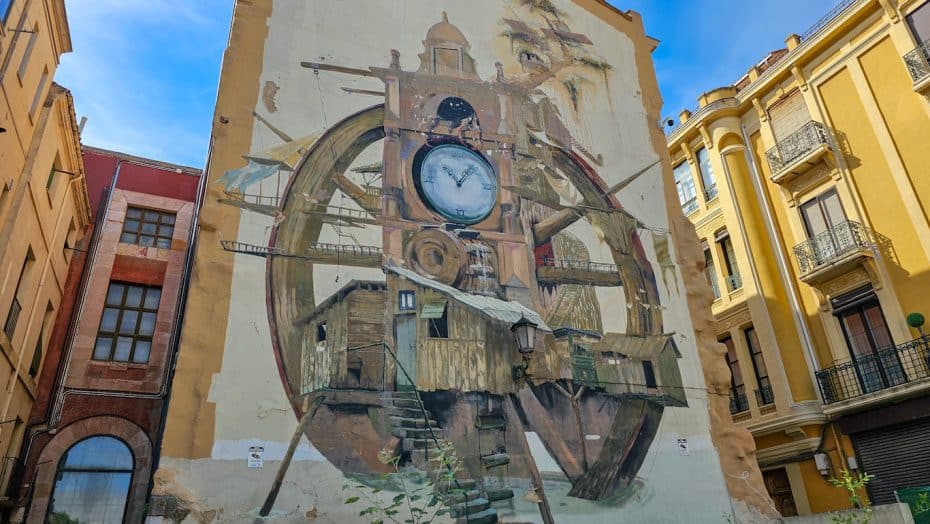
One primary location for these artworks is, naturally, in the historic center, specifically along the streets of Balborraz and Riego. These large-scale paintings cover the facades of buildings, providing a contrast to the traditional Romanesque architecture.
Famed street artists, including local talent such as Carlos Adeva, have contributed to Zamora’s murals. Adeva’s work often reflects social issues and incorporates elements from Spanish folklore. His mural “El Espantapájaros,” found in Plaza San Martín, is particularly famous for its intricate design. He also created a mural dedicated to Queen Urraca, which you can see below:
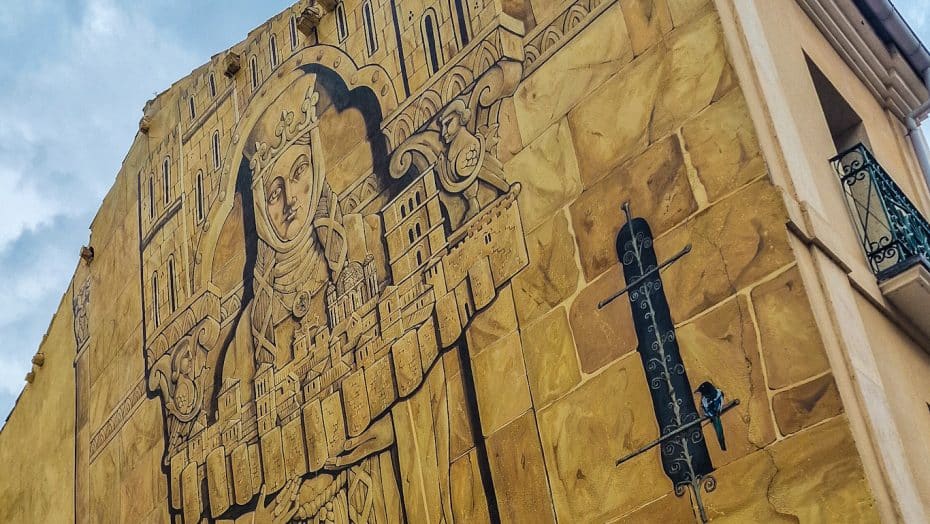
Like with Art Nouveau architecture, you can also book a tour of the city’s street art or do it yourself. Many murals showcase traditional life, so they’re among the top things to see in Zamora on a weekend getaway.
Fun fact: There is a graffiti of renowned actress Marlene Dietrich in Zamora next to a poem dedicated to her… for some reason.
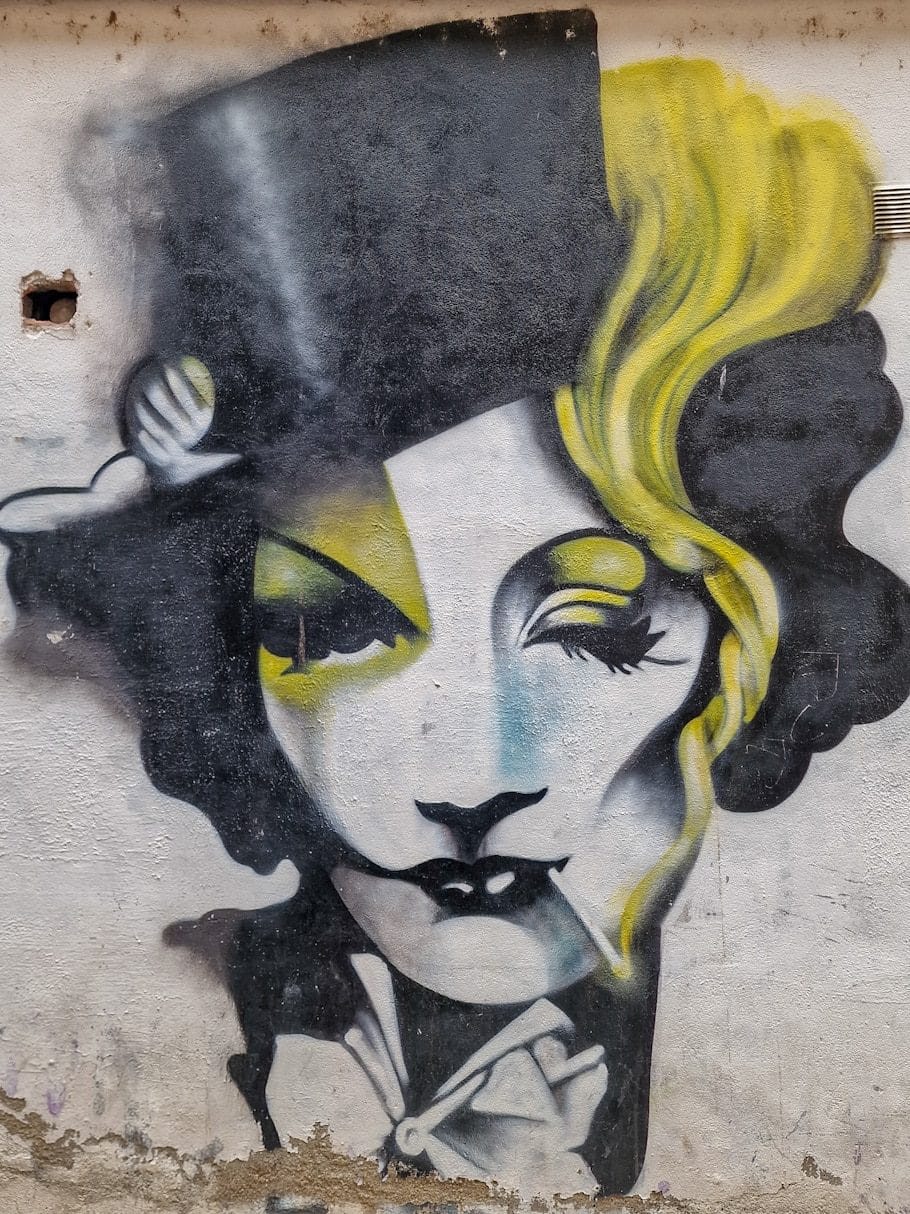
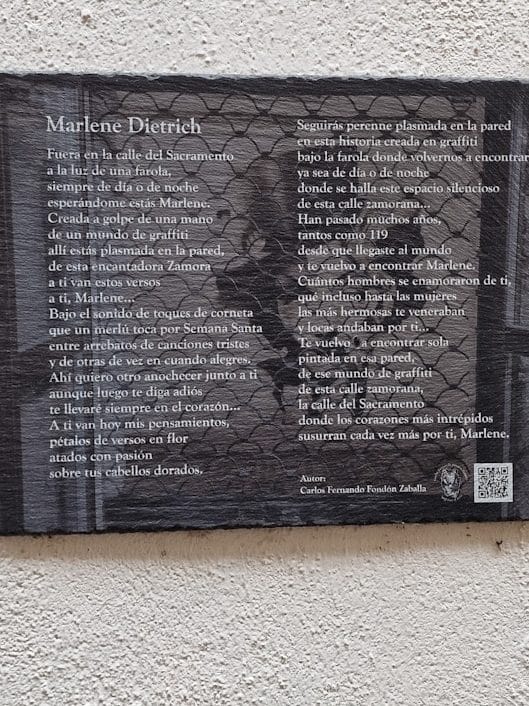
11. Staring at the City from Above
Lastly, you can visit its viewpoints to better understand what Zamora is all about. These spots will allow you to get stunning views of the city, capture beautiful pictures and videos, and truly take in the breathtaking scenery surrounding you.
And, if you’re not physically up to going uphill, you can always take a bus or the city’s tourist train. I know I love a viewpoint, and Zamora’s doesn’t disappoint. Zamora’s best viewpoints include the Mirador del Troncoso and the Mirador de San Cipriano.




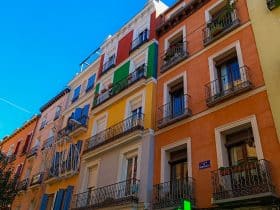
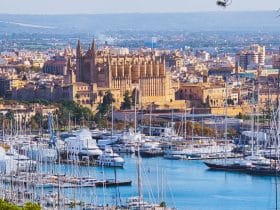
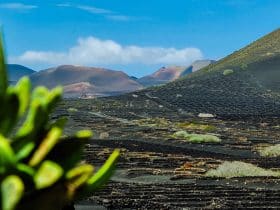
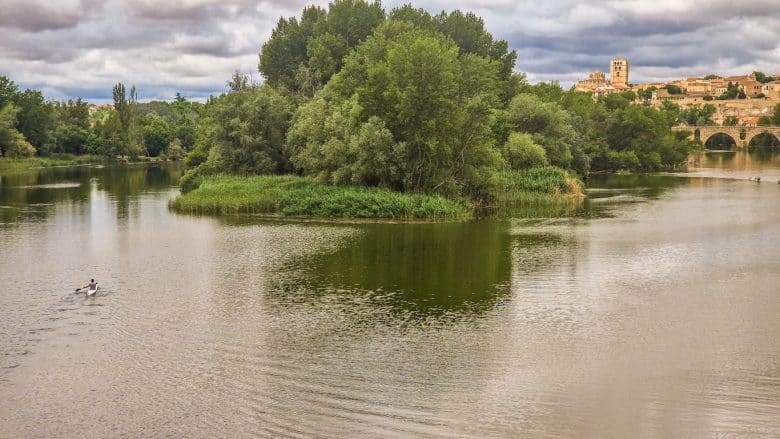
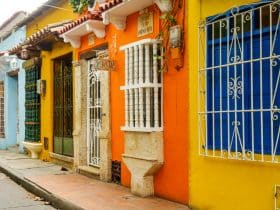













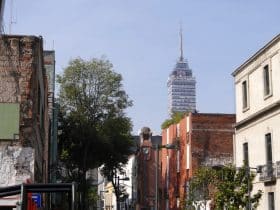
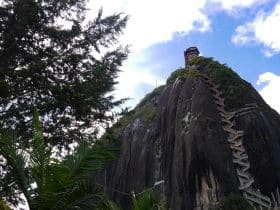
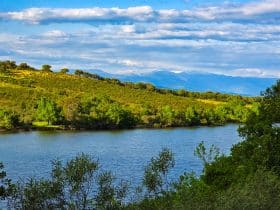
Leave a Reply
View Comments